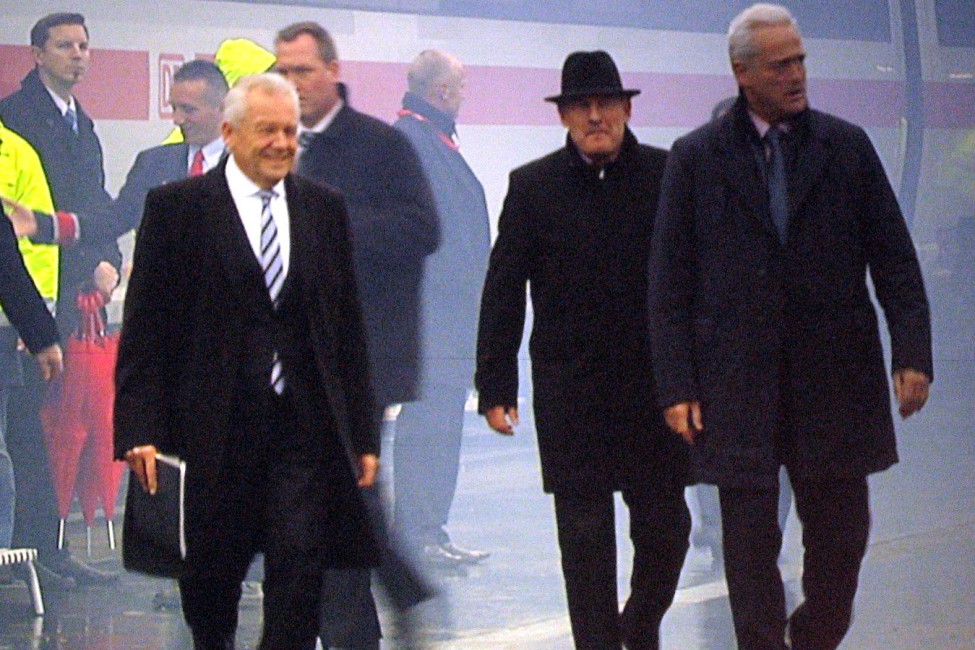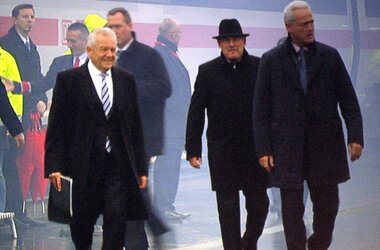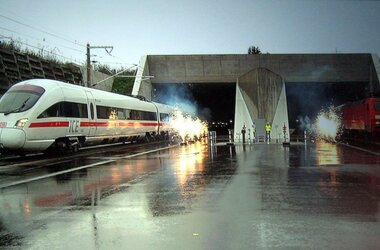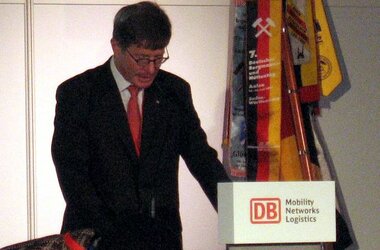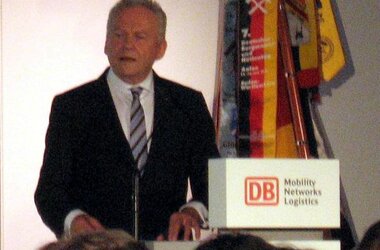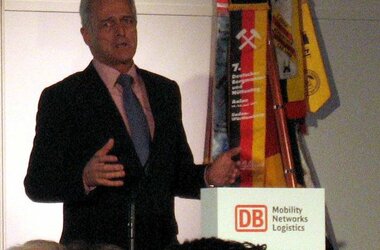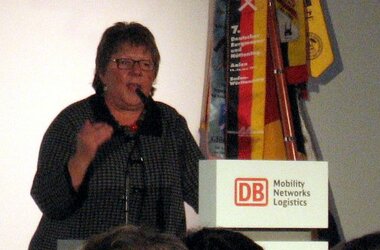Official opening ceremony for Katzenberg tunnel on the new and improved Karlsruhe – Basel railway line
On 4th December 2012, the imminent start of operations of the Katzenberg tunnel with the timetable change on 9th December was celebrated in advance with a symbolic opening ceremony.
The significance of the Katzenberg tunnel and of this planning approval section was made clear in the speeches by the DB AG representative for the state of Baden-Württemberg, Mr. Eckart Fricke, the Chairman of the Board of Deutsche Bahn AG, Dr. Rüdiger Grube, the Federal Minister for Transport, Building and Urban Development, Dr. Peter Ramsauer, the Minister for Traffic and Infrastructure of the state of Baden-Württemberg, Mr. Winfried Hermann and the tunnel’s patron, retired parliamentary secretary Ms. Marion Capers-Merk.
On 4th December 2012, the imminent start of operations of the Katzenberg tunnel with the timetable change on 9th December was celebrated in advance with a symbolic opening ceremony.
The significance of the Katzenberg tunnel and of this planning approval section was made clear in the speeches by the DB AG representative for the state of Baden-Württemberg, Mr. Eckart Fricke, the Chairman of the Board of Deutsche Bahn AG, Dr. Rüdiger Grube, the Federal Minister for Transport, Building and Urban Development, Dr. Peter Ramsauer, the Minister for Traffic and Infrastructure of the state of Baden-Württemberg, Mr. Winfried Hermann and the tunnel’s patron, retired parliamentary secretary Ms. Marion Capers-Merk.
The Katzenberg tunnel is located in planning approval section 9.1 of the new and improved Karlsruhe-Basel railway line in the Efringen-Kirchen district. At 9.385 m long, it is the third longest railway tunnel in Germany. The tunnel consists of two parallel single-track tunnel tubes. Together with its connecting lines to the south and the north (8 km and 4km long respectively), it was completed in around seven and a half years.
The opening of the Katzenberg tunnel means that the maximum speed on the new line is now 250 km/h, shortening traveling times by up to six minutes; previously, the many curves on the Rhine valley line around the Isteiner Klotz rock formation meant that trains could only travel at 70 km/h in some areas.
In addition to achieving shorter traveling times, the project included modernizing the stations in Schliengen und Eimeldingen. Also, by means of noise protection walls extending four meters above the upper surface of the tracks and additional structural measures such as vibration protection (BSO/MK system) and noise-absorbing retaining walls, significant improvements were made to the noise situation in the Schliengen and Eimeldingen areas.
The costs of constructing the tunnel and connecting it with the Rhine valley railway amount to around 520 million Euros.
KREBS+KIEFER was responsible for checking the structural design of individual structures connected with the tunnel itself and the connecting lines. The checking engineers were Prof. Dr.-Ing. Constantinescu and Dr.-Ing. Retzepis. KREBS+KIEFER, represented by Mr. Steiger and Mr. Schmidt, was also involved in producing expert reports on geotechnology on behalf of the Federal Railway Authority.
